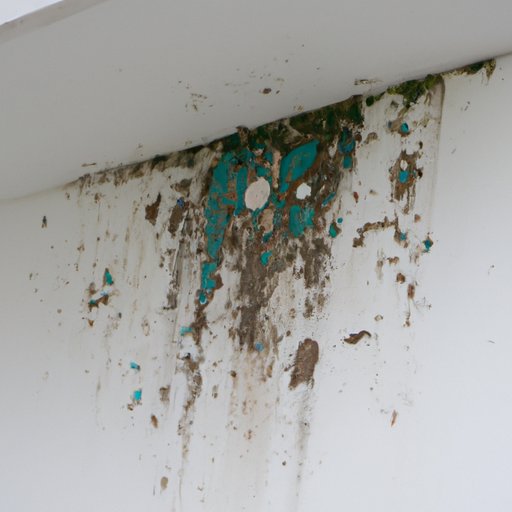Introduction
Mold is a type of fungus that can grow both indoors and outdoors, often in damp or humid environments. It is made up of tiny spores that are invisible to the naked eye, and it can cause a variety of health issues if inhaled or ingested. In this article, we will explore the health risks associated with mold exposure and provide advice on how to identify and remove mold from your home.
Investigating How Mold Affects Asthma and Allergies
Mold can be particularly dangerous for people who suffer from asthma or allergies, as it can trigger allergic reactions and exacerbate symptoms. Common symptoms of mold-related illnesses include coughing, wheezing, sneezing, and itchy eyes, nose, and throat. In some cases, it can even lead to more serious respiratory problems such as bronchitis and pneumonia. Furthermore, long-term exposure to mold may increase the risk of developing certain types of cancers.

Understanding What Causes Mold in the Home
Mold needs moisture in order to survive and thrive, so any area of the home that has high levels of moisture is at risk for mold growth. Common sources of moisture that can lead to mold include leaky pipes, roof leaks, flooding, and condensation from air conditioners or dehumidifiers. Mold can also grow in areas where there is poor ventilation, such as bathrooms, basements, and attics. It is important to address any source of moisture in the home in order to prevent mold growth.

Identifying Mold in Your Home and Remediation Strategies
Mold can be difficult to identify, but there are several signs that may indicate its presence. These include an unpleasant musty odor, discoloration on walls or ceilings, and visible patches of mold. If you suspect that your home has a mold infestation, it is important to take steps to remove the mold as soon as possible. This can involve cleaning affected areas with a commercial cleaner, using a HEPA filter vacuum, and sealing off any affected areas with plastic sheeting.
Learning About Mold Prevention and Control
The best way to protect your home and health from the effects of mold is to take preventive measures. This includes keeping moisture levels low by using a dehumidifier and ensuring that all areas of the home have adequate ventilation. You should also inspect your home regularly for signs of water damage and make repairs promptly if any are found. Additionally, it is important to clean and dry any wet items within 24-48 hours to prevent mold growth.

Comparing Indoor and Outdoor Mold Levels
The amount of mold present in the environment depends on several factors, including temperature, humidity, and wind speed. Outdoor mold levels tend to be higher during the summer months when temperatures are warmer and humidity levels are higher. While indoor mold levels can also be influenced by these factors, they may be higher than outdoor levels due to the presence of moisture sources such as leaky pipes.
Conclusion
Mold can be hazardous to your health, especially for people with asthma or allergies. It is important to identify and remove any mold infestations in your home, as well as take preventive measures to reduce the risk of future mold growth. Additionally, it is important to understand the factors that influence indoor and outdoor mold levels in order to minimize your exposure. By taking these steps, you can help ensure that your home is a safe and healthy environment.
(Note: Is this article not meeting your expectations? Do you have knowledge or insights to share? Unlock new opportunities and expand your reach by joining our authors team. Click Registration to join us and share your expertise with our readers.)
